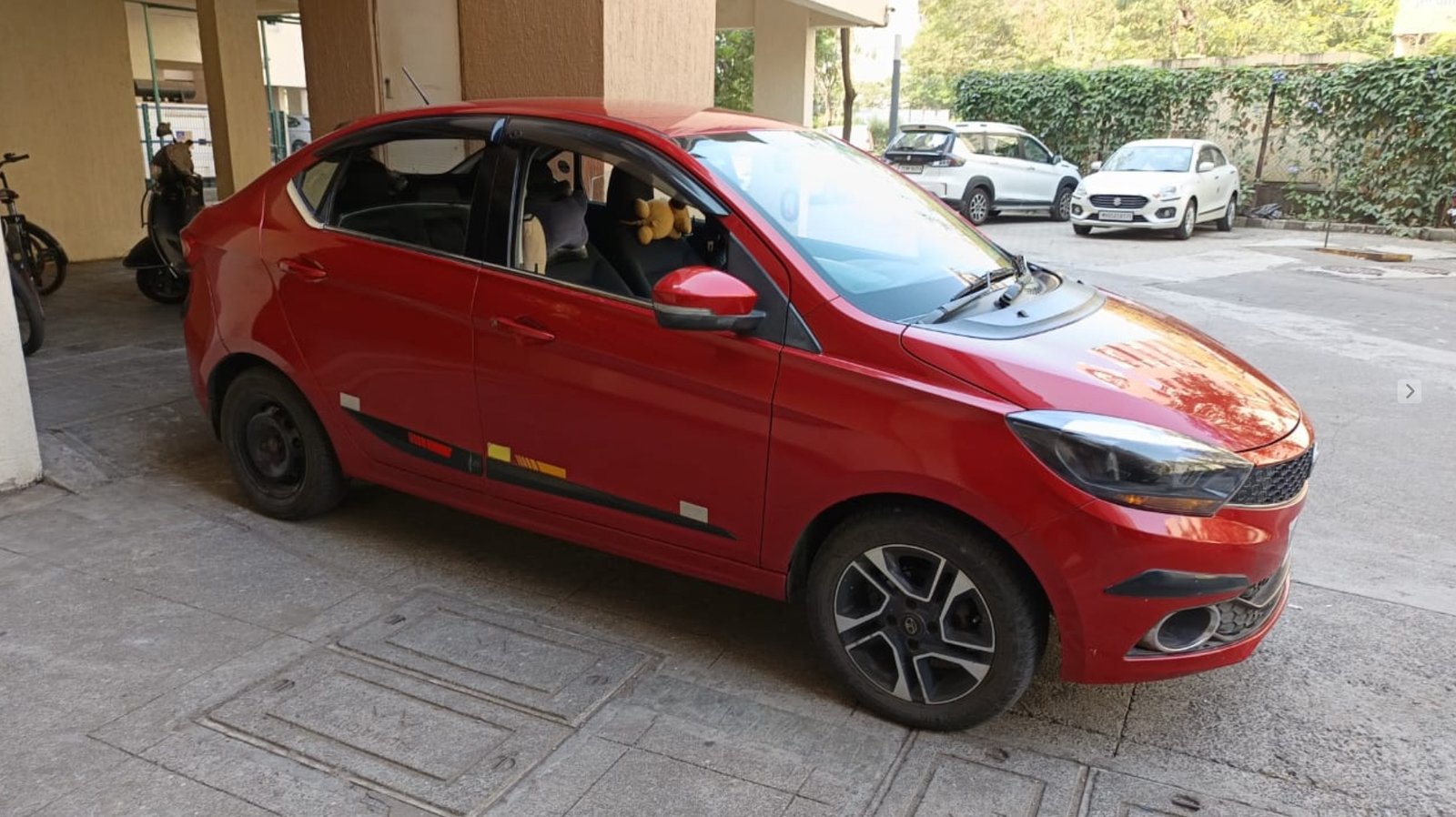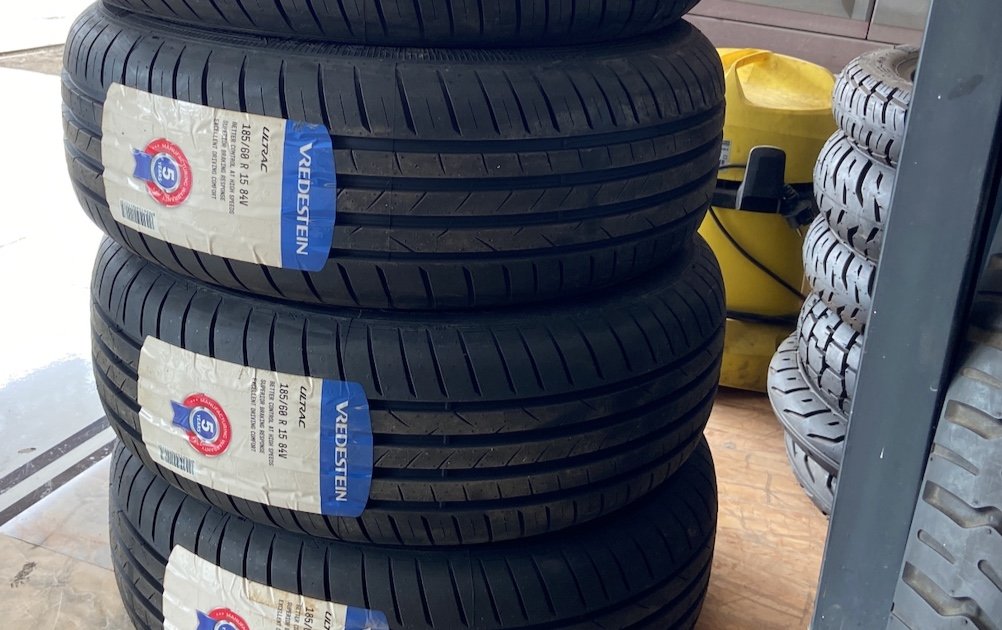When I bought my Tata Tigor XZA back in 2018, I knew I wasn’t just getting a car. I was getting a co-pilot for long drives, a daily warrior for the home-to-office grind, and a companion that would get to know more potholes than I ever cared to count. Not to mention, the horrific Mumbai traffic that not only wastes a lot of time but also costs a lot of money.
Fast forward to 2025, and we’ve officially crossed 1,04,500 kilometers together. That’s like circling the Earth… twice. So here it is. A brutally honest, real-world breakdown of what it really costs to own a Tata Tigor over six years.

🔧 Maintenance: Not Always Peace of Mind
Poor roads are still a norm in what is called the Financial Capital of India. Mind you, this is what a tax-paying citizen gets in return — paying about 30% of income as tax, and then another 55% on already taxed money in the form of fuel tax. It’s a bit of a joke, really, and not a very funny one. Bad roads break parts faster, and this is just everyday reality.
Over the years, the Tigor has seen its fair share of breakdowns and replacements:
- Suspension: Needs replacement again due to harsh road conditions. Delayed because I’m still weighing cost versus durability.
- Brakes: Rear drums resurfaced, fronts upgraded to discs.
- Battery: Replaced 1.5 years ago and doing well.
- C-Mount: Broke again after earlier replacement. Probably a mix of poor part quality and my pothole-filled commute.
🛠️ Service Center Adventures
One of the major reasons I’ve hesitated to upgrade to another Tata car is the service center experience.
I used to rely on CREST, where I always had a great experience. But ever since they shut shop, it’s been hit or miss with WellWisher Motors, the newer Authorized service centre.
Some of the issues I’ve encountered:
- Fog lamps stopped working after they opened up the front to fix the C-Mount.
- A wire left dangling under the passenger seat.
- The A/C heater stopped functioning right after they serviced the A/C.
Every visit is a new mystery to solve.
⛽ Fuel & Running Costs
Let’s talk fuel. It’s been one of the biggest ongoing expenses with this car.
- Monthly fuel spends: ₹12,000 – ₹13,600
- Commute: My daily commute averages around 70 km, with tolls adding to the cost. Of course, since the Maha elections, the tolls do not exist anymore, so saving close to ₹2,000 per month now. (Sigh!)
- Mileage: The mileage I get is around 11 to 13 kmpl in city traffic, and 16+ on highways — provided traffic gods are in a good mood.
To reduce cost, I carpool weekly using S-Ride, which brings in about ₹300–₹500 weekly on an average. That helps, especially when fuel prices swing like mood swings in a soap opera. Definitely helps take the edge off.

⚙️ AMT Woes
I went in knowing this wasn’t a fully automatic, and that’s fine. But I didn’t expect the AMT to jerk so often in slow-moving traffic. It’s manageable once you understand it, but far from smooth.
Back in 2018, this was the most affordable “automatic” option available. Given the choices then, I still think it was the right call. I plan to get the settings recalibrated — once I find a trustworthy service partner.
🛞 Tyres & Road Grip
I switched to Vredestein Ultrac 185/60 R15 84V from Continental CC5, and I’m impressed. The new set has clocked 30,000 km and still has 10,000–15,000 km of life left. Excellent grip and control on highways, I actually enjoy driving more now, and it indeed offers lower road noise to creep into the car.

The old CC5s I had were not as impressive as I have had fellow Tigor owners suggest or experience, even though I had verified the date of manufacture before I got those. Another option was to consider the BridgeStone B250, however I was worried about the tyre noise from my previous experience with the make.
For some reason, Vredestein has actually performed much better. I got all four replaced at the same time for ₹22,000 – similarly priced to CC5s back then.
The new CC6 is being said to be an evolution and is better, however given my experience with Vredestein, I may decide to stick with it when it comes to replacement. Who knows?
💰 Ownership Cost: Let’s Talk Numbers
If you’re wondering what all this love-hate relationship with the Tigor has cost me, here’s the breakdown:
I paid ₹7,36,000 when I bought the car brand new in 2018. That included the first year of insurance and a few practical upgrades — reverse parking camera with LED screen, side skirts, bumper protectors, puddle lamp, window visors, and Tata’s LEAP program, which gave me extended warranty coverage for up to 4 years or 60,000 km.
Over the years, I’ve spent approximately:
-
₹7,20,000 on fuel
-
₹75,000 on repairs and maintenance
(That fuel number includes a ₹20,000 buffer for those months I forgot to tag expenses in Drivvo.)
So the total cost of ownership comes up to around ₹15,28,000.
That’s the price of six years, 1 lakh+ kilometers, many memorable road trips, and quite a few chai breaks.
✅ Verdict: Still Worth It?
Yes, absolutely.
Despite its quirks, the Tigor has delivered. It’s been with me through road trips, rush hours, late-night drives, and hasn’t quit. Sure, the AMT could be smoother, and the service network needs serious work, but the car itself? Solid.
Would I buy it again? Probably. I even considered the iCNG version, which remains the only automatic CNG car in India.
So, if you’re considering a Tigor, go in with your eyes open and expectations realistic. It’s a good choice for practical buyers.
💬 What Do You Think?
Got questions about the Tigor? Thinking of buying or upgrading? Drop your questions and experiences in the comments or reach out to me on X (Twitter) @indianomicstv. I’d love to hear your stories too.


 India
India